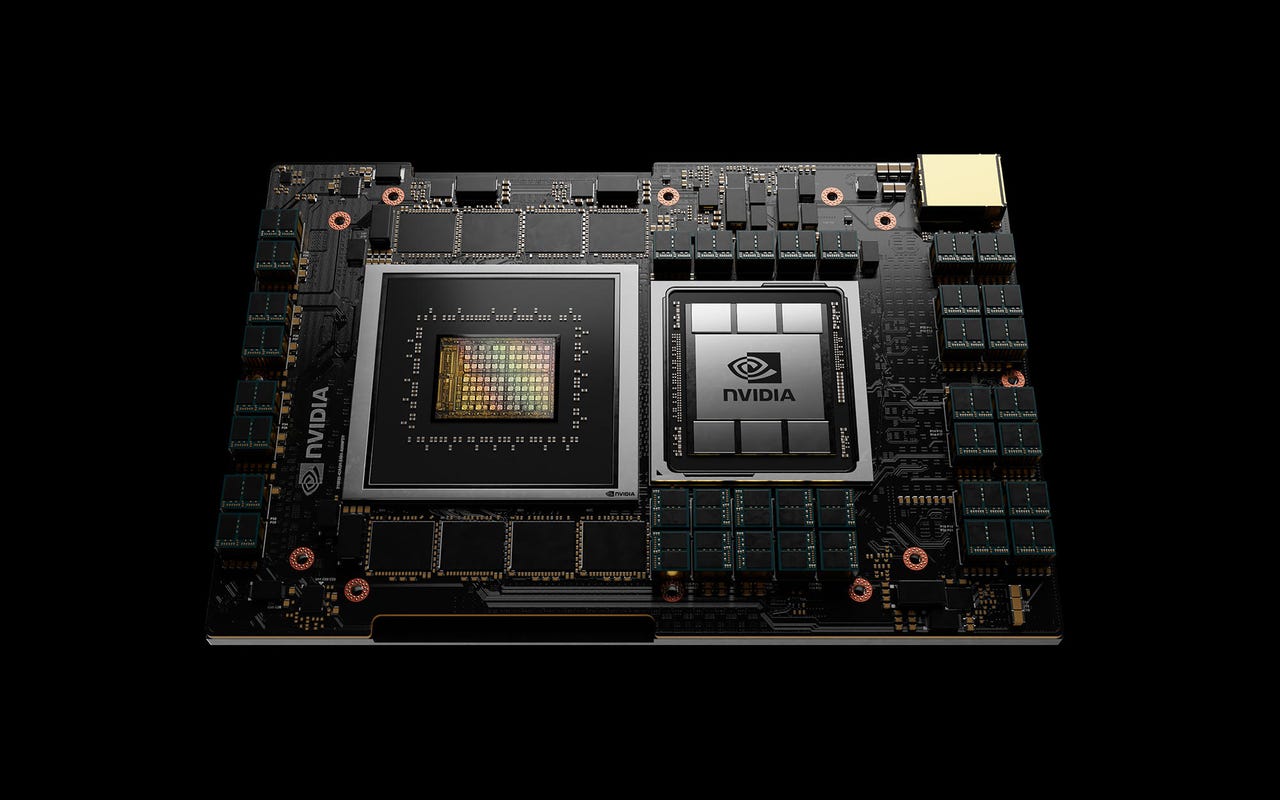Nvidia lays out its three-chip data center roadmap


The Grace CPU is designed for terabyte-scale accelerated computing.
On Day One of the Nvidia GTC conference, CEO Jensen Huang on Monday laid out the company's revamped data center roadmap, fitting in the newly-announced Grace CPU. As part of Nvidia's data center strategy, Huang also announced new partnerships with Amazon Web Services, Ampere Computing and others combining Arm-based processors with Nvidia GPUs.
Grace, Huang said in his keynote, "gives us the third foundational technology for computing and the ability to rearchitect every aspect of the data center for AI."
Cloud
The chip, designed for terabyte-scale accelerated computing, joins Nvidia's GPUs and DPUs (data processing units) in the data center.
"Each chip architecture has a two-year rhythm, with likely a kicker in between," Huang said. "One year will focus on x86 platforms. One year will focus on Arm platforms. Every year will see new exciting products from us... Three chips, yearly leaps, one architecture."
Nvidia' GPUs already play a key role in bringing AI to the data center, and its business there is growing fast. In February, the company reported that for the fourth quarter its Data Center segment revenue hit a record $1.9 billion, up 97 percent from a year earlier. Full-year revenue was a record $6.7 billion, up 124 percent.
Meanwhile, back in September, Nvidia announced its intent to acquire chip IP vendor Arm for $40 billion, with plans to expand further into high-growth markets.
"Arm is the most popular CPU in the world, for good reason," Huang said in his keynote. While it's used broadly in mobile and embedded markets, it's "just starting" to gain traction in areas like cloud, enterprise and edge data centers.
"For the markets we serve, we can accelerate Arm's adoption," he said.
To that end, Huang announced that Nvidia is partnering with AWS to bring Nvidia GPUs together with AWS Graviton2-based EC2 instances. AWS launched its Arm-based CPUs back in late 2019.
"This partnership brings Arm into the most demanding cloud workloads -- AI and cloud gaming," Huang said. The instances will allow game developers to run Android games natively on AWS, among other things.
In partnership with Ampere Computing, Nvidia also announced a scientific and cloud computing SDK and reference system.
The Nvidia Arm HPC Developer Kit includes an Ampere Altra CPU, with 80 Arm Neoverse cores running up to 3.3GHz. It includes dual Nvidia A100 GPUs, each delivering 312 teraflops of FP16 deep learning performance. Lastly, it includes two Nvidia BlueField-2 DPUs, which accelerate networking, storage and security.
Meanwhile, Nvidia is expanding its collaboration with Marvell to combine Octeon DPUs with GPUs to accelerate cloud, enterprise, carrier and edge applications.
In PCs, Nvidia is partnering with MediaTek, one of the world's largest suppliers of Arm-based SoCs, to create a reference platform supporting Chromium, Linux and Nvidia SDKs. This should help bring ray-traced graphics and AI applications to a new class of laptops.